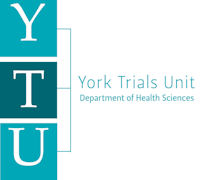Lateral Compression Type-1 fracture fixation in the elderly, a randomised controlled trial (L1FE)
With age people have an increased risk of fracturing or breaking a bone. A common bone to fracture is the pelvis; this type of fracture is called a Lateral Compression type-1 (LC-1) fracture. These fractures often occur when older adults, with weak bones because of osteoporosis, fall from a standing height onto their side. This type of break or fracture is called a fragility fracture. Not all pelvic fractures are connected with osteoporosis, each fracture and cause of fracture is unique. As the UK and the world have an aging population there is expected be an increase in the number of people experiencing an LC-1 fracture. With more people having LC-1 fractures the cost of fragility fractures is expected to rise.
The current treatment for LC-1 fractures is to encourage people to move as much as they can tolerate, as soon as possible after the injury. The reason LC-1 fractures are not treated with surgery was that until recently the hardware (screws and plates) used to fix and stabilise the fracture did not grip well in bones with osteoporosis. LC-1 fractures can be painful and some people are not able to get up and walk for weeks. Not getting up and moving (immobility) is associated with additional health problems such as chest infections, urinary tract infections, pressure sores, and blood clots. These additional health problems can contribute to loss of independence and difficulty coping at home; this can happen to anyone who is immobile (not limited to those with LC-1 fractures). With the help of physiotherapy and rehabilitation people are able to improve their strength, get back on their feet, and complete everyday activities.
Pelvic surgeons think patients that have difficulty walking after an LC-1 fracture may benefit from a new surgical technique called the INFIX. This technique uses a long bar and screws to fix or stabilise the pelvis in the best position to heal. The screws are placed into the large hip bones, which even in someone with osteoporosis would have good grip. The INFIX may improve the treatment of these fractures and patients outcomes. The INFIX technique is safe, easy for surgeons to be trained in, and patients are able to move around quickly afterwards. Moving around quickly after surgery is important to help to prevent some of the complications associated with not moving. This study is designed as a randomised controlled trial to find out which treatment: surgical fixation with the INFIX or standard non-surgical treatment is better for patients, and helps to save the NHS money. If people are able to get moving sooner after surgery compared to not having surgery this may help save money on rehabilitation, care, and help people get back to everyday activities sooner.
Setting
NHS Major trauma units and specialist trauma centres in England, Scotland and Wales.
Target Population:
The target population is patients 60 years old or older who have had a Lateral Compression Type-1 fracture resulting from a fall from standing height and are having difficulty walking because of pain from their injury.
Sample Size:
We aim to recruit 600 participants, 300 will receive surgical treatment with the INFIX and 300 will receive standard non-surgical treatment.
Health Technologies Being Assessed:
Surgical Fixation: Surgical fixation consists of anterior pelvic fixation using INFIX surgical technique/device.
Non-operative management: Non-surgical treatment in the control arm will consist of mobilisation as pain allows in line with current UK standard of care.
We will assess patients at the start of the study, then at two weeks, six weeks, 12 weeks, six months, and some participants at one year. At the assessments participants will complete questionnaires about how they manage day to day activities, quality of life, any support they may have at home, complete a walking assessment (at 12 weeks), and have x-rays to check pelvis healing.
All of our questionnaires have been chosen with help from our patient panel to be meaningful and not be a burden to complete. We will also find out the cost of both treatments relative to its benefits to find out which is better value for money for the NHS.
Publications
Cook E, Laycock J, Sivapathasuntharam D, Maturana C, Hilton C, Doherty L, et al. Surgical versus non-surgical management of lateral compression type-1 pelvic fracture in adults 60 years and older: the L1FE RCT. Health Technol Assess 2024;28(15). https://
Privacy Notice: How we use your research data
Trial Details
Funder
National Institute for Health Research Health Technology Assessment Programme (16/167/57)
Sponsor
Barts Health NHS Trust
ISRCTN registration
IRAS project number
255609
Ethics Committee & Reference Number
Start Date
01.10.2018
End date
31.03.2023
Contact Us
If you are interested in becoming a trial site (or an existing one) Joanne Laycock (joanne.laycock@york.ac.uk) or Camila Maturana (camila.maturana@york.ac.uk).
YTU Team
- Liz Cook, Trial Manager
- Camila Maturana, Trial Coordinator
- Joanne Laycock, Trial Coordinator
- Laura Doherty, Trial Support Officer
- Catriona McDaid, Reader in Trials
- David Torgerson, Director, York Trials Unit
- Catherine Hewitt, Deputy Director, York Trials Unit
External Collaborators
- Peter Bates, Chief Investigator, Barts Health NHS Trust
- Jamila Kassam, Barts Health NHS Trust
- Catherine Hilton, Barts Health NHS Trust
- Dhanupriya Sivapathasuntharam, Barts Health NHS Trust
- Peter Hull, Nottingham University Hospital NHS Trust
- Mehool Acharya, North Bristol NHS Trust
- Daren Forward, Nottingham University Hospital NHS Trust



